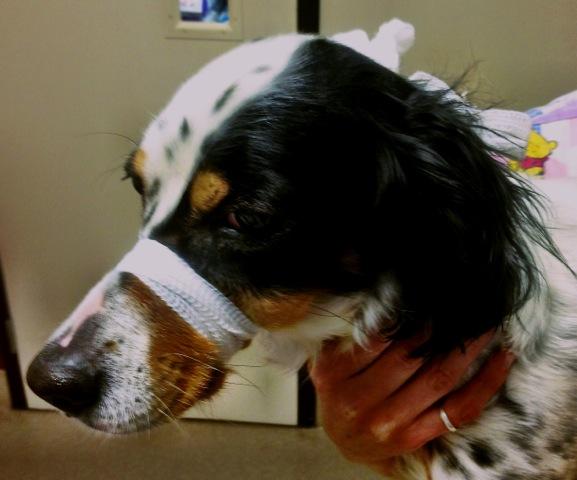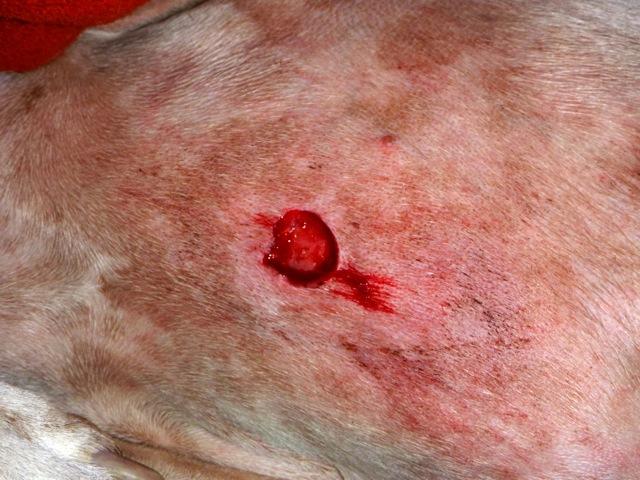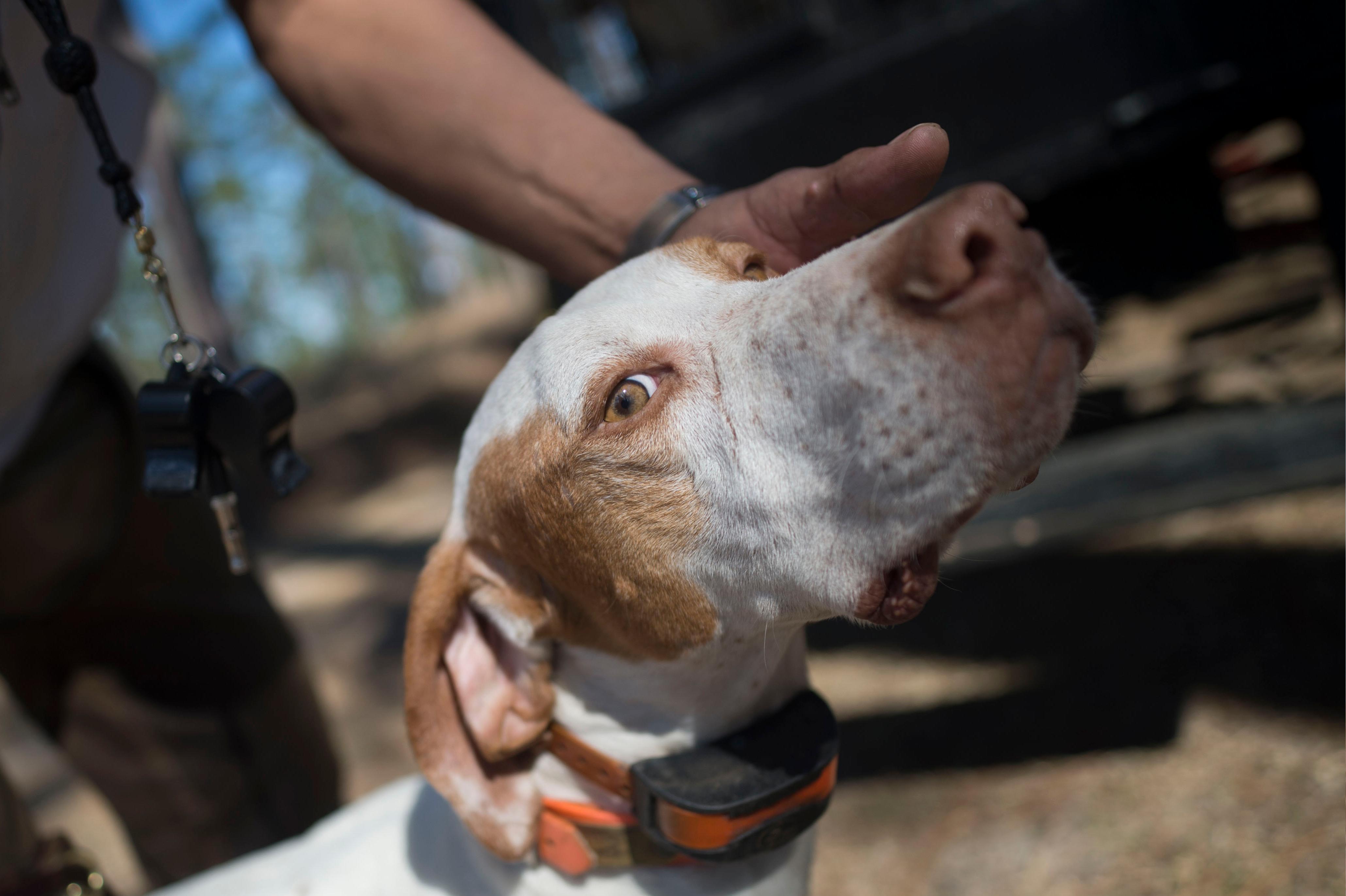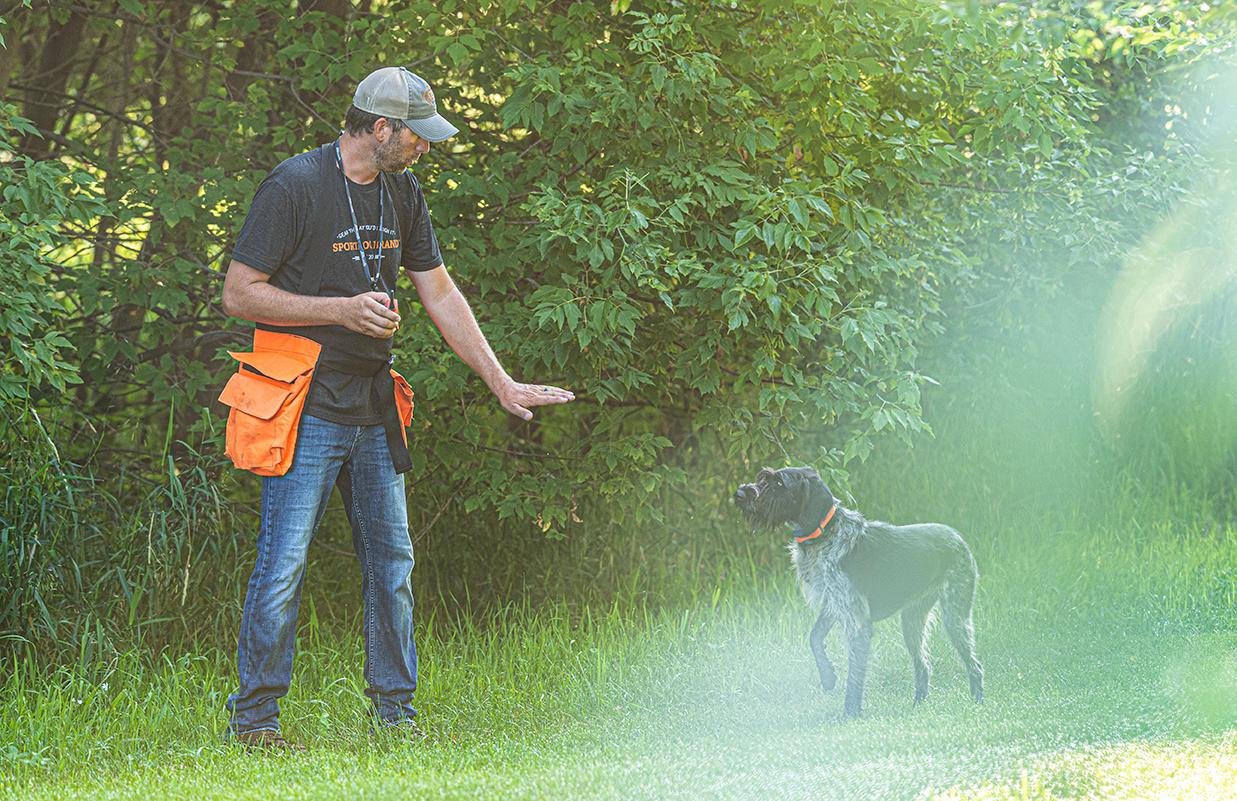
Skin Laceration Repair in the Field
Posted by Shawn KinkelaarThere is nothing finer than being afield in autumn’s country with bird dogs. The whir of wings as a covey of scaled quail erupts from the sand sage can stir the cholesterol from the morning’s greasy-spoon-country-dinner breakfast. Gun smoke clears the air as the setter climbs through the taut five-stranded barbed wire fence retrieving the first bird of the day. This is the Wild West, and ranchers want assurance that their livestock are protected. As you reach down to take the bird your well trained setter delivers gently to hand, you notice fresh blood on the dorsal surface of her back. A nimrod’s classic morning has now turned into a trip to the local vet…which in this case is 150 nautical miles from where the event occurred and it is Sunday.
Upon closer inspection of the laceration, you notice it’s a superficial slash in the skin and not into the deeper muscle layers. Superficial lacerations of the skin can be stapled with a little bit of veterinary knowhow and the proper supplies. Deeper lacerations into the muscle must be closed in several layers with sutures and attempts to staple will lead to a seroma (fluid trapped beneath the skin from blood and inflammation) forming and ultimately a wound that will not properly heal. A word of caution, always assess the situation of your hunting partner and use your better judgment while you’re in the field. Don’t let a little veterinary knowhow lead to something disastrous for your bird dog.
The following below are the steps to properly staple a skin laceration in the field. It’s a very good idea to establish your bird dog(s) with a local veterinarian that truly understands hunting dogs and their perils. Furthermore, I would recommend attending a seminar or first aid course to get better educated in field emergencies and learn how to suture a wound.
(1) Calm your bird dog and apply a gauze muzzle. Muzzles protect you from getting injured and can help calm an excited dog.

(2) Clip the hair around the edges of the wound. Clippers (battery operated work great) or scissors can be used. Reassess the laceration and make sure it is only through the skin and not into the deeper muscular layers.
(3) Flush or irrigate the wound repeatedly with diluted betadine solution (mix tap water and betadine solution to the consistency or color of weak iced tea) from a 12 cc or 20 cc syringe. The pressure from the syringed betadine/H2O solution will aid in dirt and bacterial removal.

(4) 2% Lidocaine or 0.25 to 0.5% Marcaine (local anesthetic) can be used to irrigate the wound to topically anesthetize the tissue and can be injected around the laceration margins. This is where a field first aid course and a bird dog vet will come in handy. Wait 5 to 10 minutes before you proceed from here.

(5) Trim any necrotic or dead looking skin along the edges of the laceration with scissors. This will make the margins fresh and also the wound will bleed again. Bleeding brings in good factors that will aid in killing bacteria and help in healing.

(6) Appose the edges of the laceration with the staple gun. Staples should be placed about 3 to 4 mm apart from each other. It doesn’t matter with end you start at.

(7) Place Neosporin or Silvadene cream over the staples. Wrap the area (not too tight) if they can lick or traumatize the staples.
(8) Staples typically need to be removed in 14 days. Watch for swelling, redness, heat or pain associated with the area. If any of these are noted, seek veterinary attention. I typically place my patients on an antibiotic like Simplicef or Cephalexin for 7 days.
Before performing this, remember that Shawn is a medical professional. If you have ANY doubts about your own ability or the seriousness of the wound, please consult your medical professional immediately.
About Shawn
Shawn knew at the early age of seven that he was afflicted with an obsession for bird dogs and horses; he knew then, that he wanted to become a veterinarian. After bouncing on his head one to many times as a parachuting medic with the 82nd Airborne Division, he decided to go to veterinary school. He realized his dream in 1997 by graduating from Washington State University and went into mixed animal practice. Currently Shawn has a companion animal practice in Castle Rock, Colorado. His special interest is in the veterinary care of sporting dogs and, specifically, in canine anatomy/physiology and reproduction. In the fall, when not in the office, he can be found roaming the uplands of North America chasing his bird dogs.

Shawn Kinkelaar
Effingham, IL
Shawn Kinkelaar was born and raised in the town of Effingham in central Illinois. Kinkelaar grew up hunting quail and pheasant over pointing dogs with his grandfather and uncle. He began field trialing in the early 1980s and in the late 1980s he began working for and with several of...
Related Articles

Dealing with Hunting Dog Injuries
by The SportDOG Staff
Cuts are common in hunting dogs. Briars, barbed-wire, broken glass, or even sharp broken saplings can slice a dog’s skin as it hunts. Appropriate field care of wounds can decrease healing time and make the veterinarian’s job much easier. Remember the watchwords: flush, fill and wrap. Flushing Fresh cuts may look quite...

Training Pointing Dogs with Birds - Part 1
by LTC Jim Morehouse
When SportDOG® asked me to write training articles on some of the aspects of training pointing dogs to handle birds, it seemed like a pretty easy task. As a full-time trainer and quail guide in Arizona, pointing dogs and birds are my passion. However, as I started to write about...
